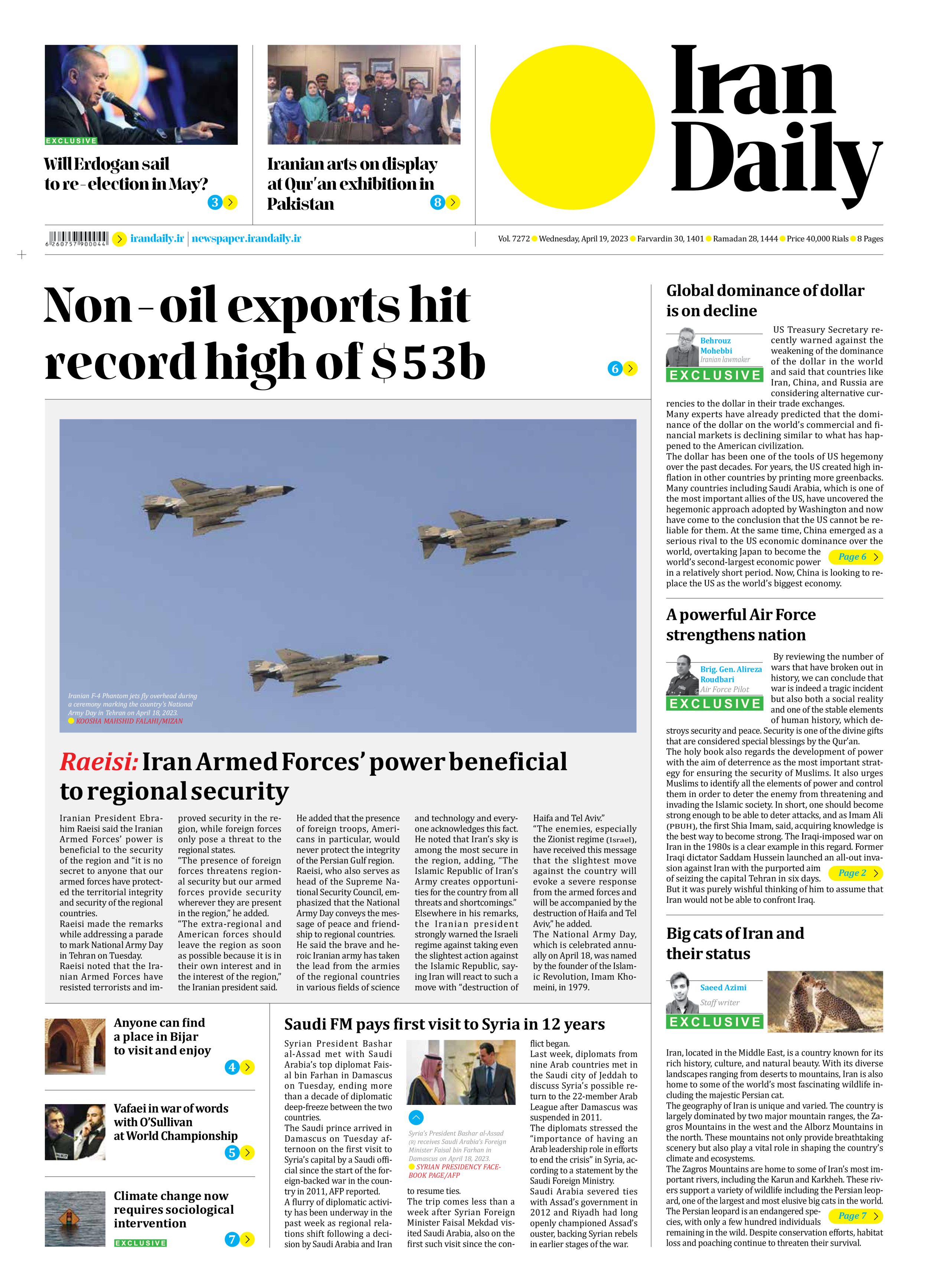
Non-oil exports hit record high of $53b
Iran’s non-oil exports have reached a record-breaking $53 billion in the previous year, according to the latest data released by the Islamic Republic of Iran Customs Administration (IRICA). This marks a significant 10% increase in the value of non-oil exports compared to the previous year. The data also reveals that Iran’s total trade, including both imports and exports, surged to an impressive $113 billion during the same period.
Upward trend
in non-oil trade
Over the past 11 years, Iran’s commercial performance has seen consistent growth, with an upward trend in the value of imported and exported commodities. This culminated in the highest recorded level of non-oil exports last year. During this period, the import of goods amounted to $59.66 billion, while non-oil exports totaled $53.17 billion, signifying a notable 12% expansion in imports and 10% in exports.
The data also reveals an oscillating trajectory in Iran’s exports over the past 11 years, with a steady upward climb observed between 2012-2017. However, amidst stringent sanctions in 2018, the export figures plummeted and persisted until 2020. This was due to the tightening of sanctions that emerged as a major impediment to export expansion. Despite this, the value of non-oil exports experienced a remarkable 10% growth in comparison to the preceding year, reaching unprecedented heights with two consecutive leaps during the previous two years.
Comparing import &
export in terms of weight
The importation of non-oil commodities to Iran has experienced numerous fluctuations over the past 11 years, characterized by peaks and troughs. After reaching its apex in 2017, the import of non-oil goods took a downward turn due to the escalation of sanctions, which led to the surge in the value of the dollar. This made imports exorbitantly expensive, rendering the acquisition of foreign goods uneconomical for purchasers. However, recent IRICA data reveals a substantial increase in the value of imported goods, culminating in the highest level of non-oil imports in the last 12 years, registering an impressive 12% growth in comparison to the previous year.
Examining the traded goods, excluding oil, in relation to their weight, the data shows that the importation of goods has displayed a steady pattern over the past 12 years. The aggregate weight of imported goods in 1401 surpassed 37 million tons, signifying a 9.7% reduction in comparison to the preceding year. On the other hand, the exportation of goods has exhibited greater fluctuations in terms of tonnage, especially from 2013 until the beginning of 2023. Notwithstanding, in 2019, the weight of exported goods amounted to an estimated 134 million tons, representing the highest volume of exported goods over the last 12 years. However, this trajectory has been on a decline ever since.
Overcoming sanctions
During the last Iranian year, the exportation of non-oil goods was estimated at approximately 122 million tons, marking little variation in comparison to the previous year. This is a clear indication that despite the challenges posed by the imposition of sanctions, Iran has been able to maintain its strong performance in the global market. Experts posit that the recent surge in the foreign exchange rate was anticipated to stimulate a boost in exportation, which has indeed come to fruition, with the depreciation of Iran’s currency (rial) rendering domestic products more affordable to foreign buyers, increasing their propensity to purchase from Iran.
Iran’s non-oil exports reaching a record-breaking $53 billion is a remarkable achievement and testament to the resilience of the country’s economy despite the challenges posed by sanctions. It also highlights Iran’s continued ability to remain competitive in the global market, showcasing the country’s potential for sustained growth and prosperity in the future.







